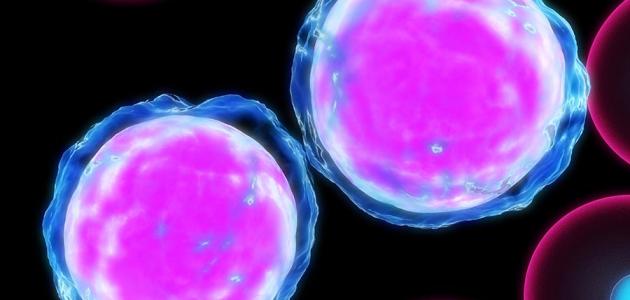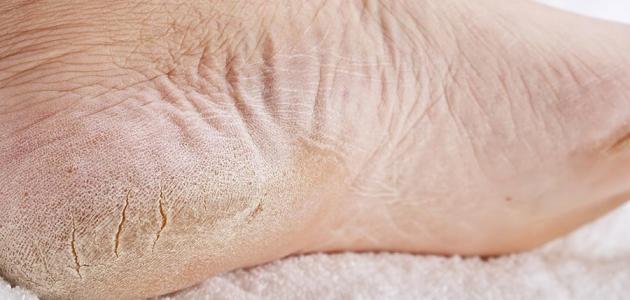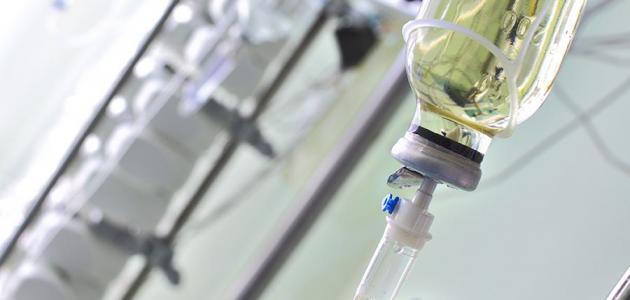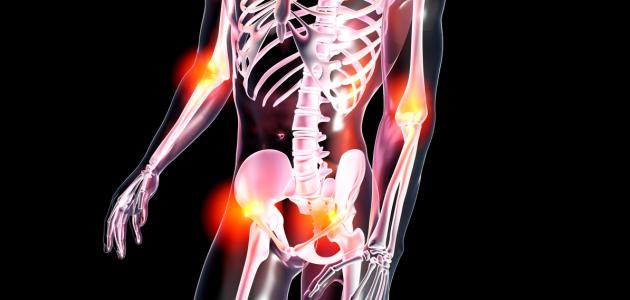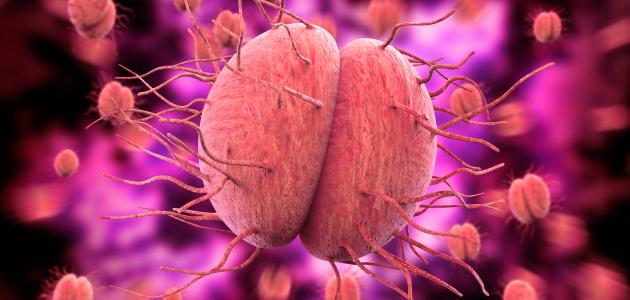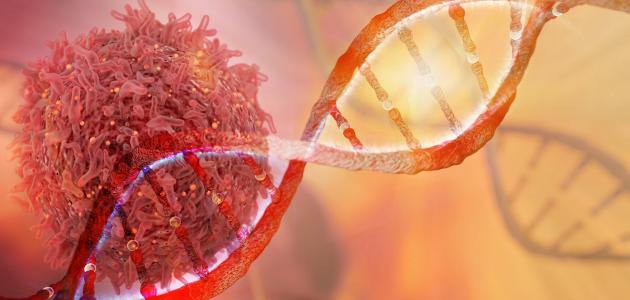Contents
Addison's disease
Addison's disease, or primary adrenal insufficiency, primary adrenal insufficiency, or adrenal insufficiency is defined as a complete or partial failure of the adrenal cortical hormones Perform its functions, [1]As a result, the levels of the hormone cortisol and aldosterone decrease in the blood, and to understand this disease it must be explained that there is in the human body above each kidney a gland known as the supra-renal gland or the adrenal gland, and the adrenal gland consists of two main parts, the internal and known as the pulp, and the external, which is known as the cortex Adreno, where the pulp produces the hormone adrenaline, while the adrenal cortex is responsible for the secretion of cortisol , aldosterone , and androgen , which is known as the male hormone, and the exposure of these glands to damage or damage causes a decrease in secretion These hormones. [2] [3]
To learn more about Addison's disease, read the following article: ( Addison's disease ) .
Generally diagnosed with Addison's disease
To understand the diagnosis of Addison's disease, the following must be explained: Primary adrenal insufficiency, known as Addison's disease, occurs as a result of damage to the adrenal gland itself, while secondary adrenal insufficiency occurs as a result of a defect in the functioning of the pituitary gland. It controls the secretion of hormones of the adrenal glands, as the pituitary gland secretes the adrenocorticotropic hormone (ACTH), and the adrenal gland responds to this by secreting the hormone cortisol, and accordingly, failure of the pituitary gland to make enough of the adrenocorticotropic hormone causes the adrenal gland to not manufacture enough Of cortisol, which leads over time to adrenal shrinkage and shrinkage in secondary insufficiency, [4]Diagnosing Addison's disease requires knowledge and evaluation of the symptoms and signs that appear on the person concerned, in addition to the importance of performing some medical tests, and this will be explained below. [5]
Review your symptoms and medical history
Diagnosing Addison's disease in the early stages is difficult due to the slow development of symptoms of the disease at that time, as the specialist doctor depends on knowing the symptoms that the patient complains of before going to request medical tests, in addition to the need to know the health history of the patient, [5] and among the most important symptoms Which accompanies Addison's disease and gradually shows the following: [6]
- Feeling of pain in the abdomen.
- Irregular or irregular menstrual periods.
- Drought.
- Feeling depressed.
- Anorexia.
- Low blood sugar level.
- diarrhea.
- Irritability.
- Craving salty foods.
- Feeling of dizziness and heaviness of the head when standing.
- Low blood pressure.
- Muscle weakness.
- Nausea and vomiting.
- Sensitivity to cold weather.
- Unplanned weight loss.
- Dark spots appearing, especially around joints, skin folds, and in areas where scars are present.
- Feeling very tired.
Examinations and analyzes
The doctor after the preview of the symptoms of Addison 's disease and health history of an infected resort to the request of a group of blood tests , which means measuring the level of sodium, potassium, cortisol and adrenocorticotropic hormone in the blood, [7] as the doctor resorts to request tests and other tests in order to confirm the low level of the hormone cortisol In the blood and find out the reason behind it, including the following: [7] [8]
- Screening stimulate adrenocorticotropic hormone : , This is the most testing diagnostic for Addison 's disease accuracy tests, and is given an injection of the hormone adrenocorticotropic factory, it is measured cortisol levels in blood or urine this before giving the injection and then, was This test is performed in two steps or only the first step is sufficient according to the results, and this is explained below: [9]
- The first step: This step is known as the short adrenocortical stimulation test, and the principle of this test is to measure the level of cortisol in the blood or urine, then give an injection of the synthetic adrenocorticotropic hormone, then re-measure the level of the hormone cortisol after thirty to sixty minutes have passed since Examination, and the principle is that cortisol levels rise significantly, but in the event of a slight increase or no increase at all, this indicates the presence of adrenal gland insufficiency, and to know whether the deficiency was primary (that is, that the person suffers from Addison's disease) or secondary deficiency The second step of the test is performed.
- The second step: This examination is performed if the previous examination results are abnormal, and the level of the hormone cortisol is measured in the body, then the synthetic adrenocortical hormone is given by intravenous or intramuscular injection, and that is over a period of 48-72 hours, then the level of the hormone is measured Cortisol during these two or three days of cortisol administration, and if the response is normal during the second or third day, the deficiency is secondary, but if the cortisol level does not increase within the three days, then adrenal insufficiency is primary, meaning that the person suffers from Addison's disease.
- Insulin Tolerance Test:The Insulin Tolerance Test, which is also known as the Insulin Induced Hypoglycemia Test, is a gold standard for diagnosing adrenal insufficiency of both types, and its idea came from the rule that low blood sugar is a stimulant Stronger for the pituitary gland to secrete adrenocorticotropic hormone, and due to the seriousness of this examination, it is forbidden to perform it in cases of heart failure, and if the level of cortisol is very low, and in the case of epilepsy, and even in cases where it is permitted to perform it should be performed under the supervision of a specialist doctor. To his mechanism; The level of cortisol and glucose is measured first, then the person in question is injected with insulin to reduce the level of sugar in the blood, and the level of cortisol and glucose is measured after 30, 45, and 90 minutes, and the normal response is low glucose level with a high level of cortisol, and if the examination is completed, the person is given a snack.[10] [9]
- The Corticotropin Releasing Hormone stimulates the pituitary gland to secrete adrenocorticotropic hormone, which in turn stimulates the adrenal cortisol to secrete, and this test is done by measuring the level of cortisol in The blood, then the synthetic peel-directed hormone is injected, then the level of cortisol is measured every half hour for an hour and a half, and if the response of the hormone directed at the adrenal cortex is normal, but the cortisol hormone is abnormal, then the person suffers from Addison's disease, but if the result of the hormone directed at peel Abnormal adrenal glands, the patient suffers from secondary adrenal insufficiency. [10]
- Examination of antibodies to Addison's disease: Antibodies are defined as proteins manufactured by the immune system in order to confront bacteria, viruses, and pathogens that may be exposed to it, and in cases where Addison's disease is caused by an autoimmune disease, the antibodies often appear in the blood analysis, and if these appear Objects, it is possible to confirm Addison's disease without the need for any other tests or analyzes. [8]
- Examination of the functions of the thyroid gland: , there is the thyroid gland in the neck, which is responsible for the secretion of a group of hormones that control the operations of metabolism and growth in the body, and people diagnosed with Addison 's usually suffer from deficiencies or drowsiness in the thyroid gland , meaning that the thyroid gland produces its hormones at lower levels than required, and by conducting an analysis of thyroid function, this deficiency can be detected, if any. [11]
- Tuberculosis tests: Because Addison's disease may be caused by infection with tuberculosis, as previously mentioned, the doctor may order tuberculosis tests, including a urine test that detects the bacteria that cause this disease, and a skin test , which is injected with the bacteria Causing the disease in its passive form, and monitoring the reaction that occurs, in the event that swelling and swelling occur, this means that the person has TB in its inactive form, and also from the tuberculosis tests: chest x-ray . [8]
- Imaging examinations: Imaging examinations, including: CT scans or computed tomography (CT) scans of the abdominal area, or magnetic resonance imaging of the brain, help in detecting any changes in the size or shape of the adrenal glands Or the pituitary gland, but it should be noted that imaging tests generally contribute to diagnosing adrenal insufficiency by providing more supportive information without relying on it alone to definitively diagnose this disorder. Hormone tests can confirm a definitive diagnosis of adrenal insufficiency. [12] [10]
Diagnosed with Addison's disease during seizures
In talking about Addison's disease, it is worth explaining what is known as the Addisonian crisis, which is also called adrenal crisis, or acute adrenal insufficiency , and the attack is characterized by the emergence of symptoms quickly causing a severe condition And dangerous, especially in the event of exposure to severe stress or illness, and it is worth seeking medical help immediately to avoid possible complications, and this condition can be diagnosed by conducting blood tests and observing the symptoms that appear on the injured, and it is worth noting that treatment may take place immediately even before obtaining the results of the tests Blood, and among the symptoms of adrenal crisis are the following: [12] [6]
- Feeling disoriented, anxious, and certain psychological changes.
- Feeling very weak.
- Pale skin color.
- Sudden pain in the lower abdomen, back and legs.
- Severe vomiting and diarrhea.
- High fever.
- Have difficulty staying awake, or lose consciousness completely.
The nature of Addison's disease
To understand what causes this disease, it is necessary to clarify the role of hormones that decrease when suffering from it, for example the importance of the hormone cortisol in the body's response to stress, in addition to regulating the metabolism of proteins, carbohydrates and fats, as well as its importance in maintaining blood pressure, the functioning of the heart and circulation system, and controlling Inflammation, and as for the hormone aldosterone, it helps the kidneys maintain the balance of water and salts in the body, and when its level falls below the normal range, the kidneys lose the ability to control the balance in the level of water and salt in the body, so the pressure drops below normal. [13]
It should be noted that adherence to the correct treatment helps the patient to lead a normal life, and the treatment of this condition is by using alternative corticosteroid therapy. This may include the use of hydrocortisone to compensate for the deficiency in the hormone cortisol, so that it starts with Prednisolone or Dexamethasone. In cases of a deficiency in the androgen hormone, [14]As for the prevalence of Addison's disease, it was found, according to a summary of research conducted by the University of Colorado Denve and Rocky Vista University in 2014, that one person out of every 20,000 He develops primary adrenal insufficiency or Addison's disease in the United States of America and Western Europe. [15]
References
- ^ Margaret Schell Frazier, Jeanette Drzymkowski, Essentials of Human Diseases and Conditions - E-Book , Page 188. Edited.
- ↑ "Addison's disease" , www.nhsinform.scot , Retrieved 7-10-2019. Edited.
- ↑ "Addison's disease" , www.mayoclinic.org , Retrieved 7-10-2019. Edited.
- ↑ "Definition and Facts" , www.niddk.nih.gov , Retrieved October 5, 2019. Edited.
- ^ A b "Adrenal Insufficiency & Addison - 's Disease" , Www.niddk.nih.gov , Retrieved September 25, 2019. Edited by .
- ^ A b "Addison - 's Disease" , My.clevelandclinic.org , Retrieved September 25, 2019. Edited by .
- ^ A b "Addison - DISEASE's" , Www.mayoclinic.org , Retrieved September 25, 2019. Edited by .
- ^ A b v "Diagnosis" , Www.niddk.nih.gov , Retrieved September 29, 2019. Edited by .
- ^ A b [ https://pituitary.org/knowledge-base/disorders/adrenal-insuffieciency-addison-s-disease "" Adrenal Insufficiency (Addison's Disease) "], pituitary.org , Retrieved September 29, 2019. Edited.
- ^ A b T. "Addison - 's Disease Diagnosis" , Www.endocrineweb.com , Retrieved October 5, 2019. Edited by .
- ↑ "Addison's disease" , www.nhs.uk , Retrieved September 29, 2019. Edited.
- ^ A b "Addison's disease: How is it diagnosed?" , www.medicalnewstoday.com , Retrieved October 5, 2019. Edited.
- ↑ "Understanding Addison's Disease - the Basics" , www.webmd.com , Retrieved September 24, 2019. Edited.
- ↑ "Addison's disease treatment: Medications, side effects, and prognosis" , www.medicalnewstoday.com , Retrieved 21-10-2019. Edited.
- ↑ "Addison disease: early detection and treatment principles." , www.ncbi.nlm.nih.gov , Retrieved September 24, 2019. Edited.


